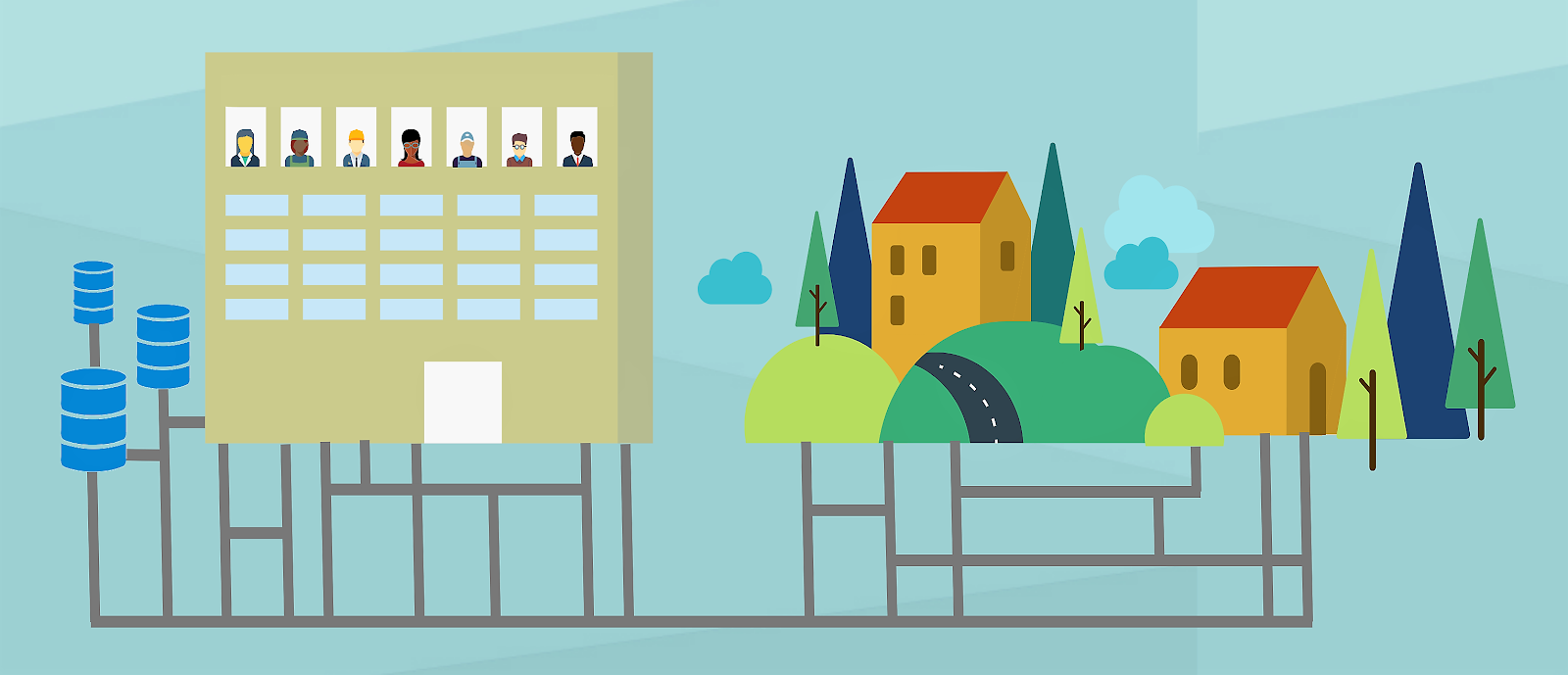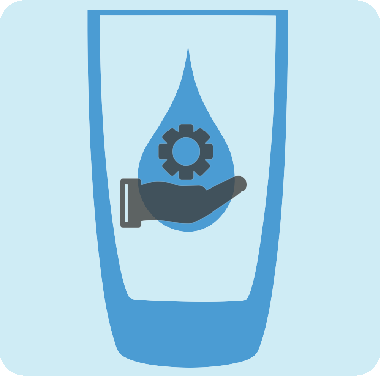Co-authored by Ashley Bleggi
At a recent conference, we asked utility managers and operators to tell us about their everyday communication challenges. Again and again, we heard that communicating with customers about the value of the service their utility provides was difficult, because too often, customers think about water as a good rather than a service. Customers see water all around them (even falling from the sky!), so it can be difficult for them to fully grasp the water cycle and all that goes into providing clean, safe, and reliable drinking water. To help overcome this challenge, we’ve put together some language to help utilities frame the value of the service that they provide in a simple (yet efficient) way.
Read on to see strategies and example language that your utility can use to communicate with the average customer who may not yet understand what they’re paying for through their water bill:
Use language that is simple and make straightforward comparisons.
Paying for water is similar to paying for postage. When you purchase stamps, you are not just paying for the stamps themselves; you are paying for the service of delivery they ensure. It is a simple process to attach a stamp to a letter and drop it in your nearest mailbox or post office, but beyond that, you don’t need to worry about the process of its transfer because you know your letter will be in good hands. Similarly, when you pay your water and wastewater bills, you are paying for the services utilities provide to reliably deliver clean and potable water to your home, business, and community.
Help customers understand the specific services utility bills guarantee.
The rates that you pay are a reflection of the value of services provided for the amount of water your household consumes. Before arriving at the tap, a great deal of work goes into ensuring all water distributed to customers is both safe to use and readily accessible. The three main costs of providing water service are plants (treatment), pipes (infrastructure) and people (labor).
Plants: Although there are many different methods that utilities use to treat water, water generally goes through four main processes before it is distributed to customers: bulk filtration, rapid mixing and flocculation, fine filtration, and disinfection. Each utility undertakes this extremely in-depth process that can last over three days to ensure that when you turn on the tap there is safe water distributed to your home.
People: Water is a service that has to be available all day, every day, 365 days a year, and utilities need to be equipped with highly trained people on-call for any situation that affects the quality or accessibility of water. These jobs are demanding in their scope of responsibilities, from daily troubleshooting to system emergencies. Most utilities have an operator, manager, utility board, and technical support staff. All of these positions require training, certifications, and an up-to-date, in-depth knowledge of best practices and regulations—not to mention compensation.
Pipes: Utilities have high fixed costs in order to operate day to day. Not only do they have to pay for the elements of the treatment process, but also the extensive network of piping used to deliver water from the facility to your community and back. This complex infrastructure needs constant maintenance to ensure your water continues to run smoothly. Your bill reflects your contribution to not only the labor required, but also the physical infrastructure linking your community and home to clean, accessible water whenever you want it.

More Resources
Rate Approval Process Communication Strategy and Toolkit
Effective Communication: 2018 Tribal Drinking Water Symposium
Communicating the Value of Drinking Water Services: Using Campaigns and Community Engagement Efforts
Planning, Policy, and Communication Strategies for Rate Increases: One Utility’s Perspective
Eight Communication Strategies to Help Water Utilities Get the Rates They Need
Special thanks to Tom Roberts for his contributions to this post.
Helen Drotor joined the Environmental Finance Center in 2018 following graduation from the University of North Carolina at Chapel Hill with degrees in Environmental Studies and Psychology. Within the EFC at UNC, she works as a Rates Specialist, assisting in data analysis and keeping Rates Dashboards up to date. As an undergraduate, Helen worked as a research assistant with the Institute for the Environment. In her free time she enjoys cooking, gardening, and board games with friends.
Ashley Bleggi graduated from the University of North Carolina at Chapel Hill with an Economics major and a Statistics and Analytics/Mathematical Decision Sciences minor, and joined the EFC at UNC in June 2018 as a Rates Specialist. She previously worked with the Statistics department at UNC Chapel Hill and is passionate about promoting accessibility and usage of real world data for the general public from a local level. In her spare time, Ashley is a competitive powerlifter.





I love the clear and simple way that you used in this article but also the illustration at the end of it. The illustration shows what the customer normally don’t see -pipes , valves and others that are underground-, except of course when there is a main break in the middle of the winter or something. I think is difficult for customer to understand what they don’t see simple because humans are visual creatures. The picture does a good gob on showing that. We should used this picture to educate our customers to educate our customers.
Cheers,